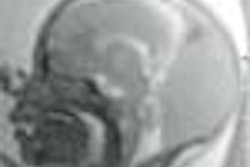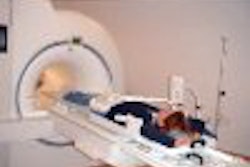As more prostate cancer patients turn to the dietary supplement PC-SPES, the herbal therapy is beginning to have implications for medical imaging. An international group hailing from California, New York, and Hannover, Germany studied the supplement's effects on prostate cancer using MRI and MR spectroscopy imaging (MRSI).
PC-SPES has been in use in the U.S. for some time, and more European patients are gaining access to the product by ordering it over the Internet, said Dr. Antje Wefer in a presentation at the 2001 European Congress of Radiology in Vienna. Wefer is from the Medizinische Hochschule in Hannover. Her co-researchers were based at the University of California, San Francisco and the Memorial Sloan-Kettering Cancer Center in New York City.
"Lab analysis of PC-SPES revealed estrogenic compounds, and the mechanism of this supplement is not well known," Wefer said. "The metabolic and morphologic effects of PC-SPES therapy have not been described."
PC-SPES is composed of eight different herbs: chrysanthemum, isatis, licorice, ganoderma lucidum, panax pseudo-g, rabdosia rubescens, saw palmetto, and scutellaria. It is particularly well tolerated among patients with androgen-independent prostate cancer who have limited treatment options (Urology, January 2001, Vol.57:1, pp.122-126).
Fifteen patients taking PC-SPES were included in this retrospective study. The mean duration of the herbal therapy was 7.3 months, and the average dose was 5.2 capsules daily. All patients underwent endorectal MRI and MR spectroscopy. MR exams were done on a 1.5-tesla Signa Horizon scanner (GE Medical Systems, Waukesha, WI). Axial T1-weighted and T2-weighted spin-echo images were obtained. MRSI point-resolved spectroscopy (PRESS) was also performed.
Regions of cancer within the peripheral zone were identified based on low signal intensity on T2-weighted images, and were then compared with changes in serum prostate-specific antigen (PSA) levels.
Abnormal metabolism was defined on MRSI as choline + creatine/citrate ratio >2 standard deviations above population norms. Atrophy was diagnosed if on MRSI choline and citrate signal-to-noise ratios were less than 5.
According to the results, both modalities detected areas of healthy peripheral zone tissue in 13 of 15 patients. Although a significant decrease in PSA (p=0.004) was observed among all patients, MRSI still found regions of cancer. Atrophy was found in 6 patients. Finally, there was no significant correlation between MRI and MRSI findings, PC-SPES duration, dosage, and PSA levels, Wefer said.
While these imaging techniques can track the effects of PC-SPES on prostate cancer, there is a need for prospective studies with both standardized PC-SPES therapy and dosage, Wefer said. The herbal supplement is gaining ground as a viable treatment option for these patients.
Researchers from the Lank Center for Genitourinary Oncology in Boston wrote in the Urology study that "PC-SPES is a well-tolerated and active treatment…toxicity was mild and included tenderness, nausea, and diarrhea." The overall decline in the PSA of these patients was 40%.
In a separate study, doctors from the Squier Urological Clinic at Columbia-Presbyterian Medical Center in New York City reported that in one case study, "PC-SPES extract decreased the PSA value from an initial value of 100 ng/mL to 24 ng/mL after 1 year and 4 months of treatment PC-SPES has shown a strong estrogenic in vivo activity as an alternative tool in the management of prostate cancer" (Journal of Alternative Complementary Medicine, October 2000, Vol.6:5, pp.449-451).
By Shalmali PalAuntMinnie.com staff writer
June 5, 2001
Click here to post your comments about this story. Please include the headline of the article in your message.
Copyright © 2001 AuntMinnie.com



















